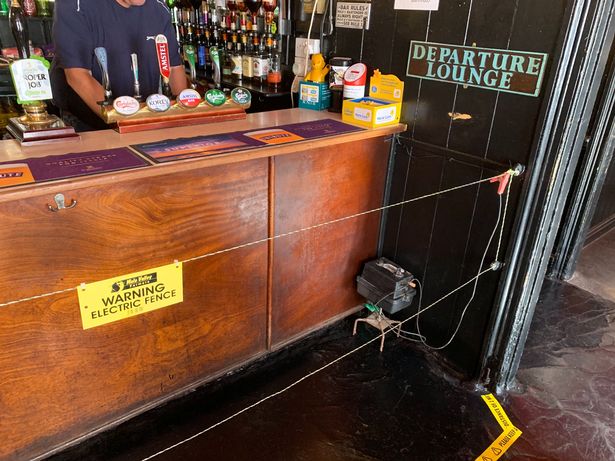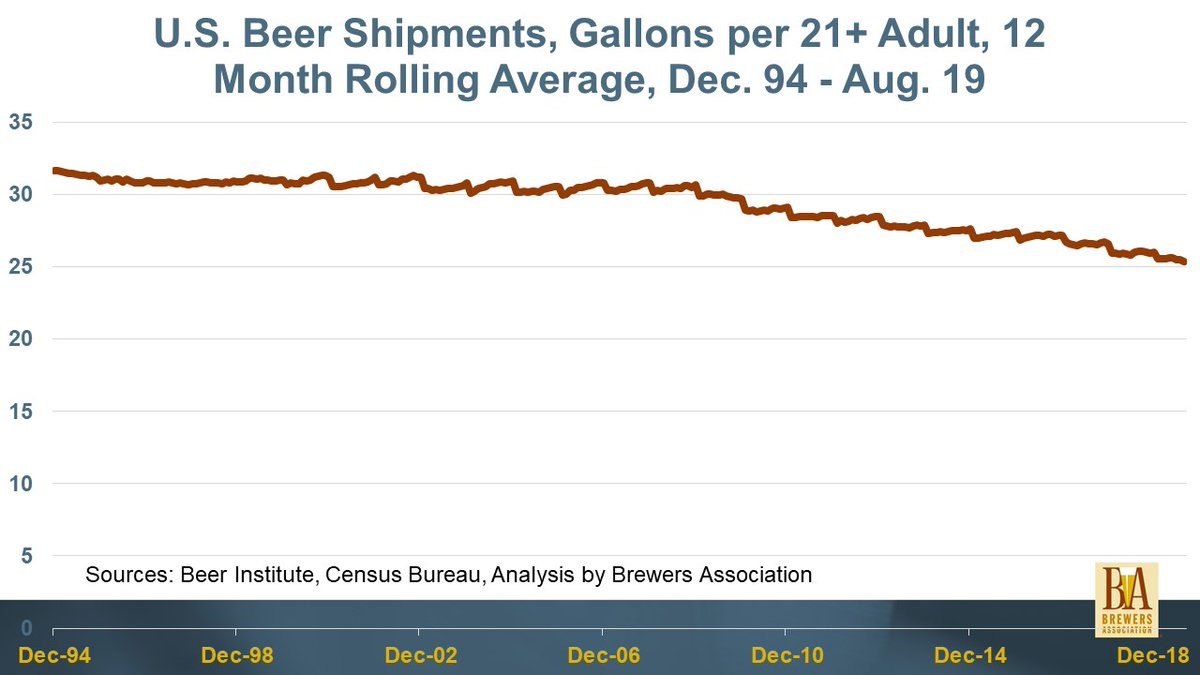Well, it’s March. Finally. From the last crop out of the garden until now I wait every year for the return to the best nine months of the year after the unreal times that are December followed by the garbage months of January and February. No, it is always all about March with me. March, March, March. And… it’s been -16C outside in the mornings. Perhaps I missed anyone mentioning it… but Canada sorta sucks sometimes. Speaking of sucks, I love Retired Martin’s photo essay on Sheffield’s Queens Hotel as shared above. I know the feeling. What else is out there? Let’s see.
In more local news, Forbes magazine has an article on breweries led by women in Africa – including one in Rwanda with an eastern Ontario twist:
Josephine Uwase and Deb Leatt number among them as brewer and chef, respectively, at Rwanda’s Kweza Craft Brewery. Like Nxusani-Mawela, they have gotten their share of coverage, in part because Kweza is Rwanda’s first brewpub; in part because Beau’s All Natural Brewing Company in Ottawa has very publicly supported Kweza with fundraising and consultation…
Less locally, for my favourite “craft in outrage!” story of the week we go to the waters off Argentina:
The owners of the three breweries in Mar del Plata, which had teamed up with a diving school for what they described as a first-of-its-kind months long experiment in deep-water beer making, were left mystified, and heartbroken, upon discovering on Tuesday that the barrels were gone. “I started crying,” said Carlos Brelles, who runs the Thalassa Diving School in Mar del Plata, a coastal city five miles from the sunken ship. “Three or four people without morals destroyed the work of so many people who put in so much effort.”
Heist! The breweries are going to try the idea again. Speaking of unfortunate situations, I have not idea why this was published other than as a submission to a dull interview contest:
5. Did you think it was going to be your most popular beer or did that take you by surprise?
I do not feel that any of our beers have a greater popularity than others. So many are good on their own merits.
Very confused I also was when I thought I was agreeing about his observations on the odd use of the term “badass” and got the thumbs up while he, Mr. B., got another sort of response. All part of the seeing and speaking of things that are otherwise unspoken.
To my east, we learn through error. It’s a principle that Lars illustrated this week as he tweeted out his Kvass making skills:
First mistake. Too much bread, and wheat bread apparently soaks up more water. So from 5l of water I’m left with 1l extract from the bread…
To my less east, I liked this profile of Gloucestershire cider and perry maker Kevin Minchew published in Pellicle this week and not only for the lack of a polished romanticized backstory:
In his own words he was living “hand to mouth,” the traditional farm labourer’s way—working hard, eating simply and drinking the product of the land from his own hands. But he recognised this couldn’t go on forever, so the traditional cidermaking life is having to take a back seat while he focuses on the day job…
To the west, Josh Noel had a great article in the Chicago Tribune this week on facing the conflicts while working in hospitality in these days of Covid:
Bondi hasn’t been out to eat in nearly a year. He doesn’t think it’s safe. So why do his customers go out? Why do they sit there, indoors, masks off, in the midst of a pandemic? He regularly serves people who appear to be congregating outside each other’s pods or bubbles — such as a group of six women who had brunch at Jerry’s one recent weekend. “It’s hard not to have contempt for that, at least from my point of view,” he said. “But I’m a professional and I try to treat everyone as well as I can.”
Down south, Alistair has posted his thoughts on the semi-silly distinction between brown and robust porters according to an ancient BJCP dartboard:
When you look at the 2008 BJCP guidelines for Porter, you’d be forgiven for thinking that the difference between brown and robust was largely based on the side of the Pond your drink came from.
It’s part of his efforts to drink his way into enlightenment upon the meaning of the word in the American context.
Everywhere, there has been lots of slightly worried considerations of purpose or status or something in the beer scribbling world. After all these years of reading, I still see that the best finds the general in the specific, if not the human condition then at least the illustration of a principle or common experience. But everything is not the best. Some is the work of the keen newbie. Some the hobbyist seeking distraction. But that is OK, too. That’s pretty much me. I was thinking about this when I pulled the January 18th issue of The New Yorker and read the article “Is It Really Too Late to Learn New Skills?” by Margaret Talbot and got stuck on this passage:
Thomas Curran and Andrew P. Hill, the authors of a 2019 study on perfectionism among American, British, and Canadian college students, have written that “increasingly, young people hold irrational ideals for themselves, ideals that manifest in unrealistic expectations for academic and professional achievement, how they should look, and what they should own,” and are worried that others will judge them harshly for their perceived failings.
Better have a chat with my kids. That’s a bit weird but would explain a lot.
Singapore-headquartered Inbrew Holdings Pte Ltd has acquired NortAmerican lager producer Molson Coors’ beer business in India. London based non-resident Indian (NRI) businessman Ravi Deol owns Inbrew Holdings Pte Ltd through privately held Ahead Global Holdings. Molson Coors India Private Limited (MCIPL) is a wholly owned subsidiary of Coors Brewing USA with popular beer brands in India.
And finally, some common sense out of Japan as Kirin finally ditches that joint venture with the military dictatorship that controls Burma:
Brewing giant Kirin said on Friday that it is ending a six-year-old joint venture with a holding company in Myanmar that is linked to the country’s military. The army this week seized power in a coup, detaining the country’s civilian leader Aung San Suu Kyi and numerous other top government figures. Kirin is “deeply concerned by the recent actions of the military in Myanmar,” the company said in a statement, adding that it had “no option but to terminate” the partnership.
No option, eh? Does this mean New Belgium is OK again? Dunno. Probably not.
There. A whirl around the world this week. For more, check out the weekly updates from Boak and Bailey mostly every Saturday, plus more withe the Beer Ladies Podcast, at the OCBG Podcast on Tuesday and sometimes on a Friday posts at The Fizz as well. We have a new entry from the DaftAboutCraft podcast. And sign up for Katie’s weekly newsletter, The Gulp, too. Plus the venerable Full Pint podcast. And Fermentation Radio with Emma Inch. There’s the AfroBeerChick podcast as well! And also look at Brewsround and Cabin Fever. And Ben has his own podcast, Beer and Badword. And remember BeerEdge, too.













 The last of birthdays, anniversaries and public holidays over the last four weeks has finally passed. And it has snowed. Wednesday was as sharp as deepest January at -16C even if it was +8C last Saturday. Five weeks before the solstice. So, I am buried in wool blankets at home this week, covered as soon as I get through the door, hugging the wood burning internet server looking for answers. Which is where I found the image above, from 1979 when
The last of birthdays, anniversaries and public holidays over the last four weeks has finally passed. And it has snowed. Wednesday was as sharp as deepest January at -16C even if it was +8C last Saturday. Five weeks before the solstice. So, I am buried in wool blankets at home this week, covered as soon as I get through the door, hugging the wood burning internet server looking for answers. Which is where I found the image above, from 1979 when  Perhaps somewhere in the middle, Boris Johnson has apparently failed to keep his word, this time related to staying out of the pub until Brexit is
Perhaps somewhere in the middle, Boris Johnson has apparently failed to keep his word, this time related to staying out of the pub until Brexit is 